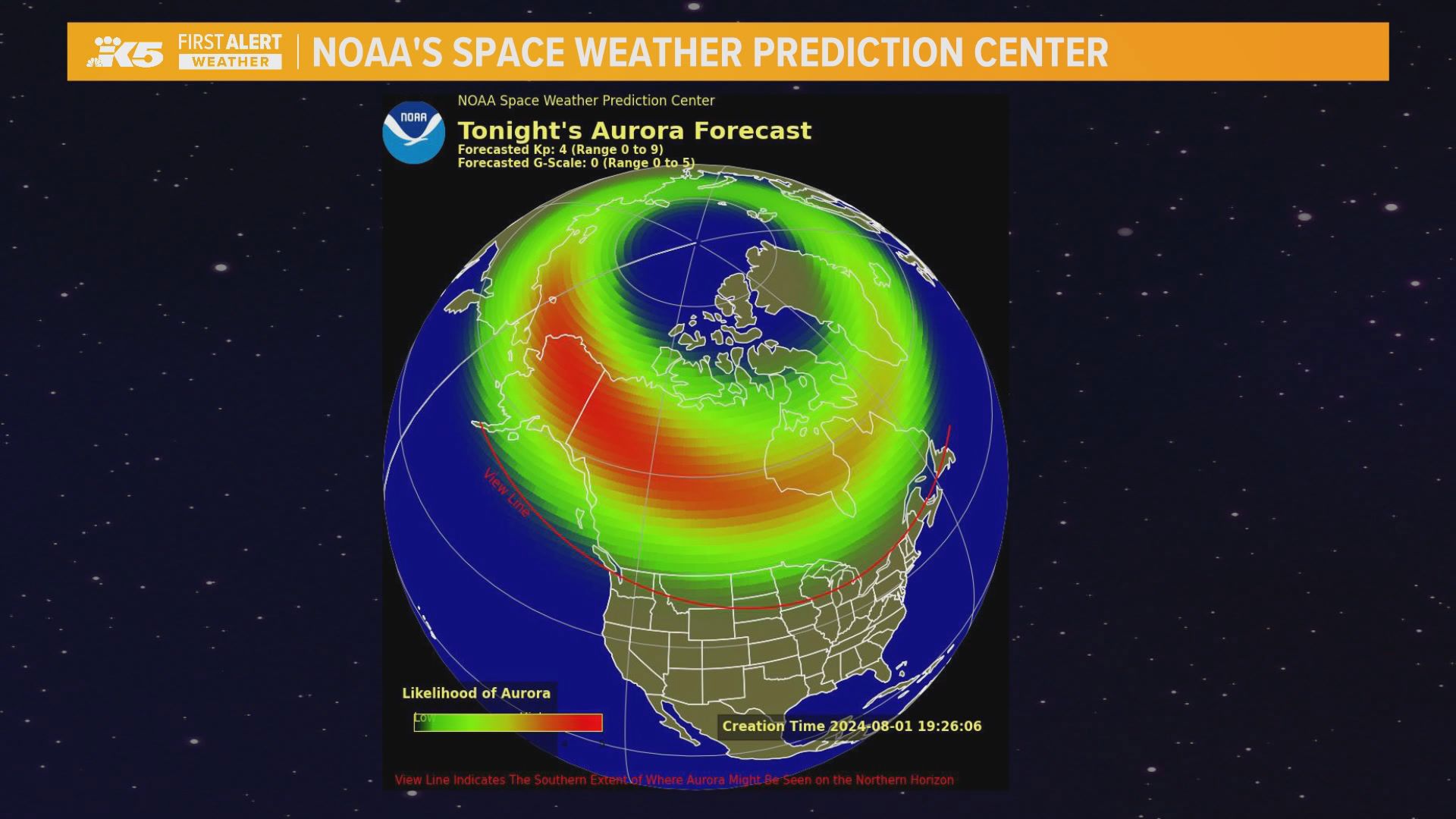SEATTLE — The northern lights could be visible in Washington state Friday night, capping off a week of geomagnetic activity from an active sunspot.
Geomagnetic activity is ranked as a Kp 4 on Friday night on a scale of one to nine. This means there is weak activity. However, northern Washington is within the view line of the aurora, according to NOAA’s Space Weather Prediction Center.
Activity increases to Kp 5 on Saturday with a minor geomagnetic storm forecasted
This week’s geomagnetic storm peaked Monday night as a moderate geomagnetic storm, although cloud coverage prevented it from being visible. Some aurora chasers reported seeing the lights Wednesday night from the Olympic Peninsula and northwest Washington.
Skies are expected to be mostly clear Friday night, which will help visibility.
Conditions could provide the opportunity for a “photographic aurora,” according to KING 5 Senior Meteorologist Rich Marriott. While the northern lights might not look as bright to your naked eye, they could appear more vibrant on camera. That’s because your eyes aren’t as sensitive to light as your camera lens, allowing the lens to capture more of it in a photograph.
To increase your chances of seeing the northern lights, get to a dark place outside the city and look north toward the horizon. The northern lights likely won't be visible straight above you.
Friday’s northern lights chances cap off a week of geomagnetic activity driven by a succession of coronal mass ejections being sent out from the sun.
“The sun is very active right now as it’s expected to be,” Marriott said.
The sun is approaching the maximum point in an 11-year cycle of solar activity, where there are a lot of sunspots and solar flares. When this happens, geomagnetic storms happen more frequently, leading to an increased probability of the northern lights being visible from Earth.
The solar cycle is expected to peak later this year or in 2025.

